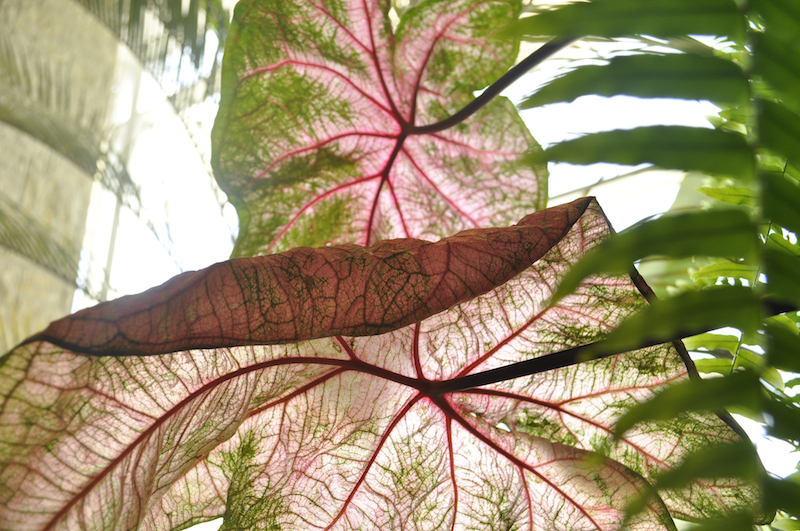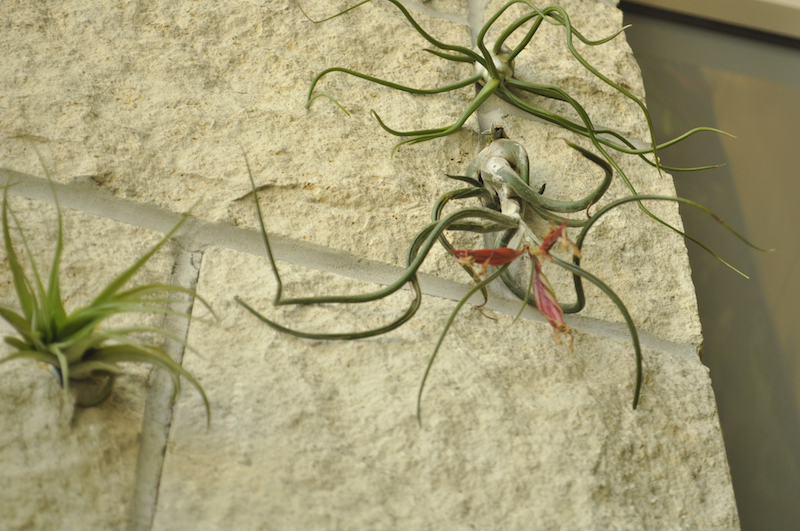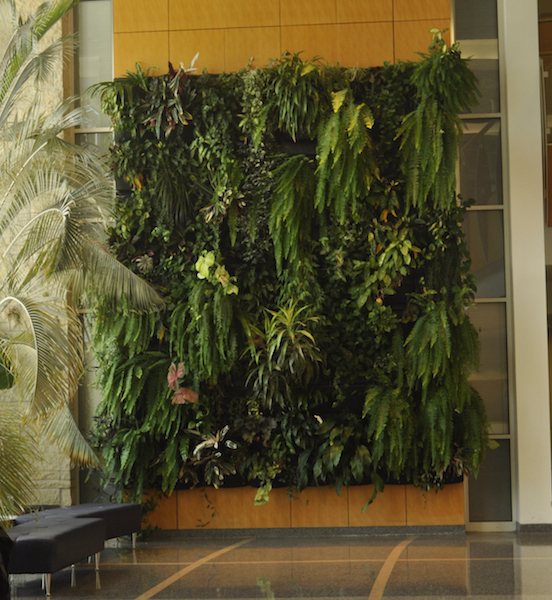Published on

The unusual red color of the Lobelias leaves make them stand out among 200 other species that thrive in the 20-foot plant wall at the Bond Life Sciences Center | Paige Blankenbuehler
Story by Madison Knapp | Bond Life Sciences summer intern
A hidden treasure on the University of Missouri’s campus is a living and breathing work of art.
In the Christopher S. Bond Life Sciences Center, a 20-foot plant wall stands as a towering tribute to the diversity of plant life and coexistence of species — a botanical landscape of more than 200 individual plants from 40 to 50 species including many ferns, vines, perennials, orchids and geraniums.
The display continues to be a visual reminder of the building’s interdisciplinary nature – much like the plants within the wall, the Bond Life Sciences Center facilitates the coexistence and collaboration between an array of researchers within its walls.
One plant cascades down the wall and stands out more than most — it looks more like a large insect than any type of plant typically seen in such displays.
Tillandsia is a genus of succulent plant native to Central America that can undergo long dry spells. The wiry plant thrives on the stone beside the plant wall without the help of a pot of soil, and is seemingly absent an essential, anatomical feature of most flora — roots.

With leaves more like Medusa’s hair, Thallandsia are rootless plants mounted on stone alongside the plant wall. | Paige Blankenbuehler
They still have tiny root protrusions, but the mass is minuscule compared to the thick leaves, which take up and store water and nutrients, rather than the root system which handles that work in most plants.
Approximately 60 Tillandsias pepper the plant wall, including a few mounted directly onto the stone wall with a special kind of non-toxic rubber cement manufactured by Davis Farms based out of San Diego.
The strange plant was added to the green tapestry by Jason Fenton, an office support associate at the Bond Life Sciences Center. He first noticed the rootless plants in Belize while on a trip there in 2003 and had been growing them at his home.
“I think they’re really beautiful and distinctive,” Fenton said. “They help give variety to the wall.”
The rootless plants require special treatment — just a little extra attention from facilities manager, Jim Bixby, who waters the Tillandsias with a spray bottle once a week.
The wall started with a vision from Jack Schultz, director of the Bond Life Sciences Center. The execution and maintenance of the feature is credited to Bixby, who has honed the project since 2010.
After trying several watering systems, Bixby found one that worked. He hung rows of pots with modified flat sides and tailored a simple, drip irrigation system made for easy watering along a grid.
Within the diverse landscape and after additions of a variety of plants over the years, Bixby has seen competition between several of the species.
The wall favors the ferns, which have taken over much of the space, crowding out other plants for the eastern sunlight that flows through the windows, Bixby said.
Several long-stemmed species have found ways to cope, however; venturing out between the ferns’ curtain-like fronds to get their fair share of sunlight.
Supervising editor: Paige Blankenbuehler
